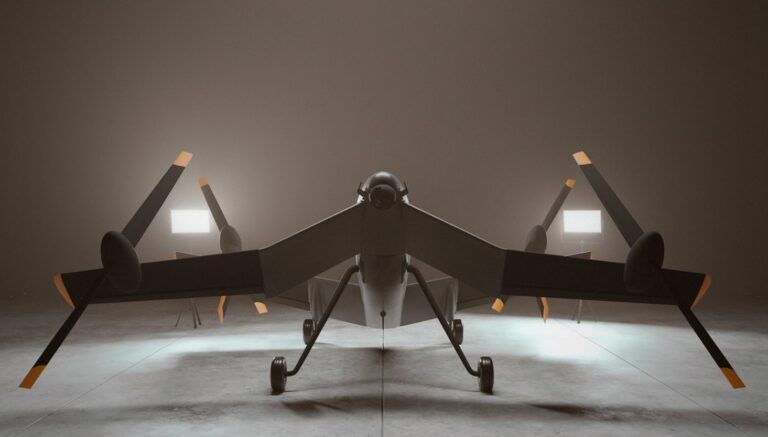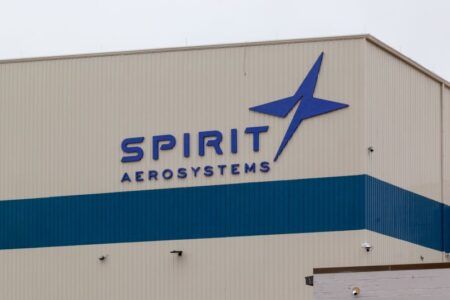BAE Systems’ Strix drone is expected to make its first flight by November, as the company progress the testing of Australia’s first indigenously developed combat drone.
Strix is a so-called hybrid, tandem-wing drone capable of carrying 160kg (353 lb) of payload over 800km (500 miles). It has intrigued many in the aerospace and defence sector since its reveal last year because of its unusual tail sitting, x-wing foldable design, and its use of landing gear.
Strix is being designed for multi-domain use in a variety of missions including air to ground strike intelligence, surveillance and reconnaissance and as a wingman for military helicopters.
The drone does not need a runway thanks to its VTOL capabilities, but crucially has the endurance of a fixed wing aircraft. “The wings fold so it fits into a container, which makes it ideal for providing long-range air capability to ships that wouldn’t otherwise be able to provide that service,” said Dave Quick, head of underwater weapons and autonomy portfolio in the maritime and land sector at the Farnborough Air Show in July. “We are planning to take Strix to initial air trials later this year, from a concept developed just under a year ago.”
Robert Merryweather, group technology director, BAE Systems said, “Strix will undergo a first flight in all-electric mode within the next few months. We then need to change to hybrid-electric propulsion to get a meaningful operational range before we offer it with integrated payloads.
“We are also looking in parallel at developments around bringing Strix down onto moving decks for maritime use cases.”
BAE Systems has said that Strix will be ready in 2026. The design passed a critical review late last year. According to reports propulsion systems testing has been done, alongside testing of the batteries, the electrical system and aspects of its autonomous control systems
The first flight tests will prove the concept and the VTOL and transition capabilities.
Ben Hudson, CEO of BAE Systems Australia said, “Strix leverages existing, proven technologies to provide an affordable and cost effective capability. We’re excited that this is the first UAS of its kind to be developed in Australia.”
Simon Grosser, CEO of Innovaero, the Perth-based firm developing Strix with BAE Systems said, “To witness the capability Strix will provide to defence, through partnering with BAE Systems Australia, is very exciting. STRIX has the potential payload capacity, range, speed, and advanced autonomy to provide a real differential over current market offerings.”





